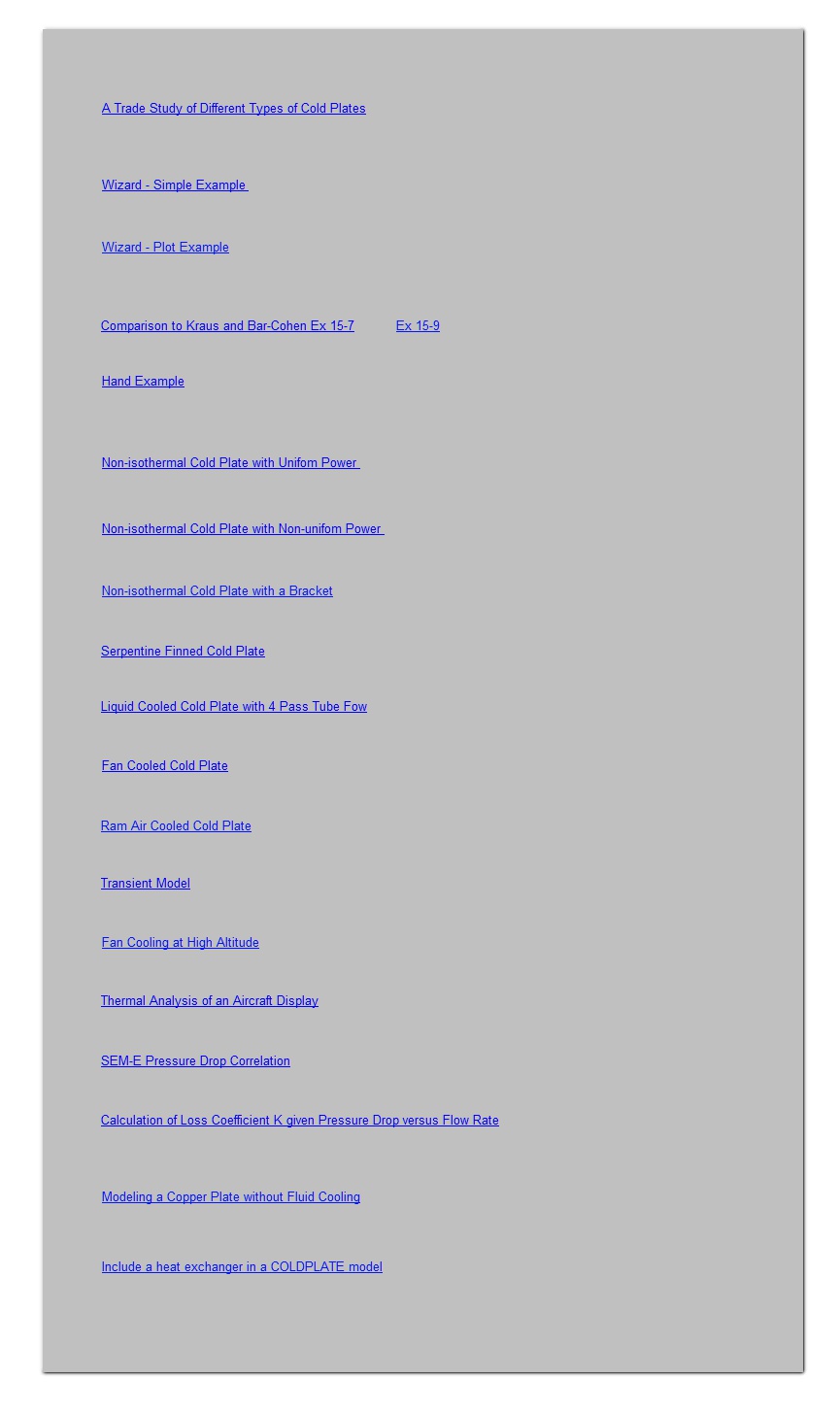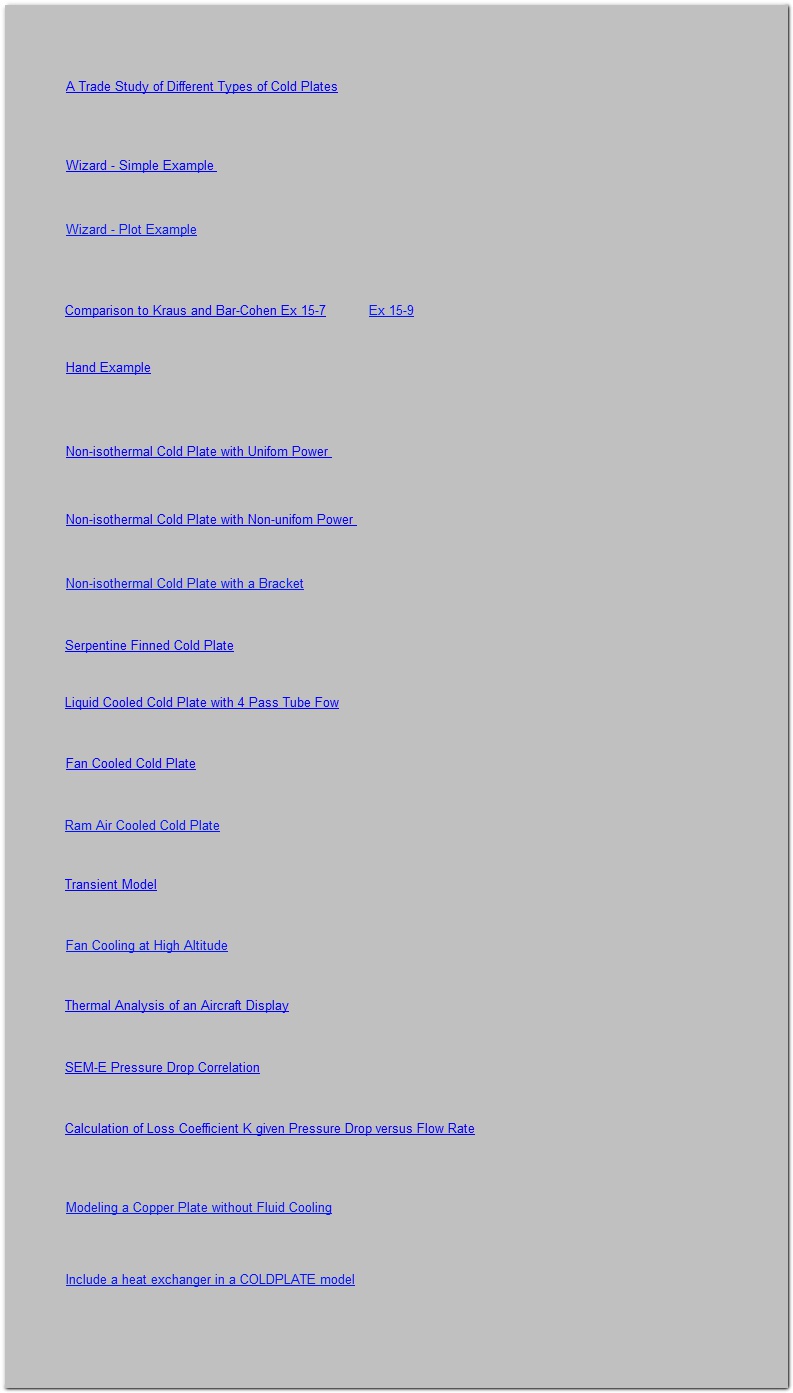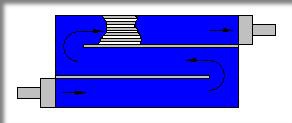|
|




This example builds on the
Wizard - Simple Example
and breaks the cold plate into a model with 8 nodes along the length and 5 along the width. The power is assumed to be uniform for this example.
This example builds on the
Non-isothermal Cold Plate with Uniform Power
to distribute the power at different nodes on the cold plate.
This example builds on the
Non-isothermal Cold Plate with Non-uniform Power
to add a bracket which is mounted to the cold plate and has additional power on it.
The
Non-isothermal Cold Plate with a Bracket
example is converted to a transient model. It is run to steady-state conditions and run for 3 minuites with the cooling fluid turned off.

EPAC
Home of COLDPLATE Software - The Most Comprehensive Cold Plate Analysis and Design Software on the Planet!
Home of COLDPLATE Software - The Most Comprehensive Cold Plate Analysis and Design Software on the Planet!
In this paper a hand analysis of a cold plate is calculated long hand showing part of what is involved
COLDPLATE calculations. The same cold plate was modeled on COLDPLATE and compared to the hand
analysis.
Listed below are a number of examples of COLDPLATE models that demonstrate the capability of the
program. Also, there are a number of reports demonstrating the accuracy of the COLDPLATE software.
Finally, there is an analysis showing how to calculate the effect loss coefficient for a quick disconnect.
A detailed example demonstrates how a serpentine model is set up. In addition, this example addes a
new cooling fluid and models pressure loss ducting before and after the cold plate.
This example demonstrates how quickly and simple it is to build a cold plate model and calculate the
cold plate operating temperature and pressure drop.
A detailed example of cooling a electronics box with 2 cold plates and a single fan. There are 2
operating conditions, one at sea level and the other at 40,000 feet.
To introduce the user to the plot generation part of the program and show how simple it is to setup,
solve and plot model results, this example plots the results showing the temperature and pressure
versus varying fin height and fin density.
In this example, a ram air cooled cold plate design is analyzed. Two flight conditions are analyzed, one
at sea level with Mach = .8 and the other at 40,000 feet with Mach = 1.0.
This report discusses the results of testing a cold plate design, problems with the design, its redesign
and the proper manner of handling fans/cold plates at high altitude.
This white paper describes the benefits of using the COLDPLATE software to design and analyze a
display for a hi-performance aircraft.
This test reports compares the measured pressure drop across a cold plate to the COLDPLATE software
predicted pressure drop.
This analysis shows how to calculate the pressure drop loss coefficient K given a curve of pressure drop
versus flow rate. K is used as an input parameter for modeling quick disconnect couplings and other
pressure loss devices.
A commerically available liquid cooled tubed cold plate is modeled and the results are compared to the
published thermal resistance. The temperature predictions of the cold plate at 2.0 GPM are also listed.
In this example we demonstrate how to model a copper plate that is not cooled by a fluid but is attached
to a 20C boundary by conduction.
A number of different types of cold plates are modeled and compared to each other to demonstrate the
range of capability of the program, the ease of building these models and the effectiveness of different
cold plate styles.
Two examples from Kraus and Bar-Cohen's book "Thermal Analysis and Control of Electronic Equipment"
are built using COLDPLATE and compared to their results.
and
This example shows how to include a heat exchanger in a COLDPLATE model.
Copyright 2019 epac-inc.com






































